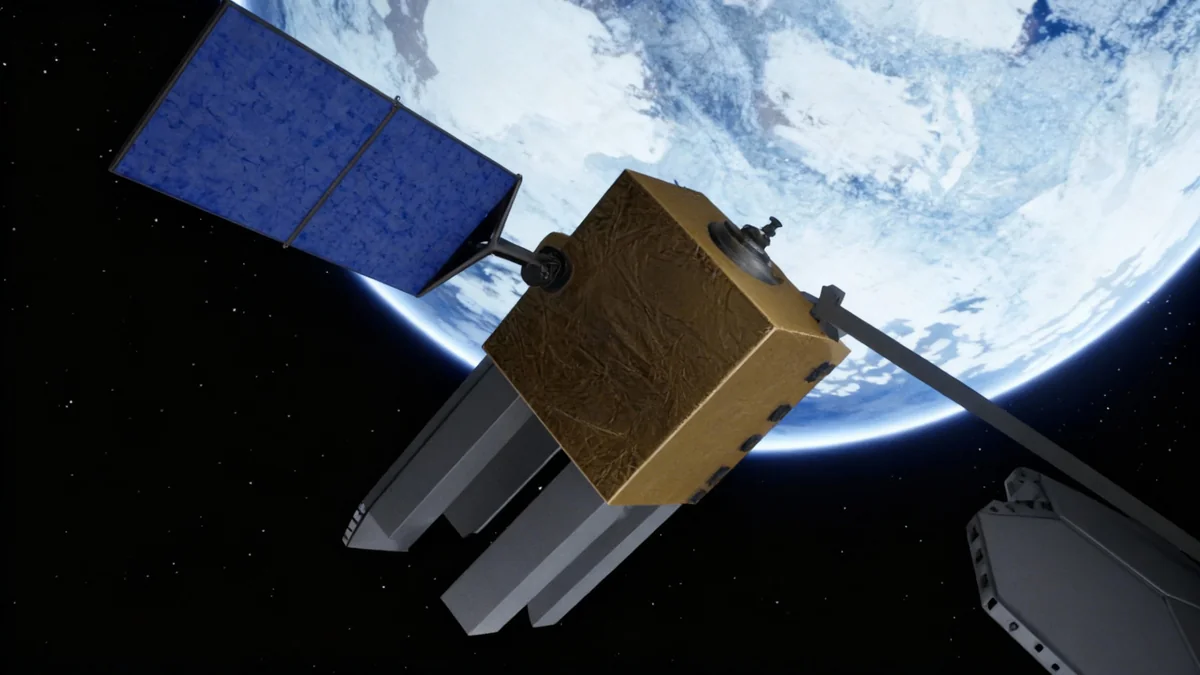The development of self-assembling data centers in space is taking a significant step forward as Rendezvous Robotics and Starcloud announce a new partnership. This collaboration aims to overcome the complex challenges of building large-scale computing infrastructure beyond Earth's atmosphere, bringing the vision of orbital data centers closer to reality.
The initiative comes amid a global surge in demand for computing power, particularly driven by artificial intelligence. Moving data centers into space offers potential solutions to the massive energy and cooling requirements that strain terrestrial infrastructure.
Key Takeaways
- Rendezvous Robotics and Starcloud are partnering to build self-assembling data centers in space.
- Starcloud plans a 5-gigawatt orbital data center, requiring expansive solar and cooling panels.
- Rendezvous Robotics uses tile-based autonomous modules for in-space construction.
- The technology aims to reduce the need for manual assembly or complex robotic arms in orbit.
- Elon Musk has indicated SpaceX's interest in similar space-based computing solutions.
The Vision for Orbital Computing
The concept of data centers in space addresses several pressing issues faced by ground-based facilities. Traditional data centers demand substantial land, energy, and cooling resources. Space, with its vast emptiness and constant solar energy, presents an attractive alternative.
Starcloud is at the forefront of this vision. The company plans to launch an AI-equipped satellite next month, featuring an Nvidia H100 GPU. This is a precursor to their long-term goal: a 5-gigawatt data center in orbit.
Fact: Energy Demands
The AI boom has created an exponential demand for compute power. This demand often outpaces the current ability to build and sustain data centers on Earth due to their significant energy and cooling needs.
Phil Frank, co-founder of Rendezvous Robotics, emphasized the practical applications of their work. He stated,
"Our mission is to build things that are going to be useful in space."This focus on utility underpins the partnership with Starcloud.
Autonomous Assembly Technology
Building large structures in space is inherently challenging. Unlike satellites, data centers are not designed for easy mobility or deployment in a compact form. This is where Rendezvous Robotics' innovative technology becomes crucial.
The company, which emerged from MIT last year, specializes in autonomous module systems. Their flagship product uses a tile-based design. These tiles, each containing components like battery cells and processors, can unfurl and assemble themselves using electromagnets after being deployed from a spacecraft.
Background: Project TESSERAE
The technology developed by Rendezvous Robotics is based on MIT Media Lab's Project TESSERAE. Ariel Ekblaw, one of the founders of Rendezvous Robotics, was the architect of TESSERAE. NASA has already conducted tests on this self-assembling system, validating its potential for in-space construction.
This tile-based approach offers a significant advantage over conventional methods. Current space construction often involves astronauts performing extravehicular activities (EVAs) with wrenches, or complex robotic arms with pre-programmed movements. These methods are labor-intensive, time-consuming, and limit the scale of what can be built.
Joe Landon, another co-founder, highlighted the limitations of existing methods. He explained that building in space typically requires sending a person, using a robotic arm with extensive planning, or designing intricate origami-like mechanical systems. These methods restrict the ultimate size of space structures.
Scaling Up for Gigawatt Power
The scale of Starcloud's planned 5-gigawatt data center is unprecedented. To achieve this, the facility will require super-large solar and cooling panels, estimated to be approximately 4 kilometers in both width and length. Such dimensions are astronomically larger than anything previously constructed in space.
For perspective, the International Space Station's solar arrays, currently the largest deployed in space, are only about 0.005% of the size of Starcloud's proposed panels. This immense scale makes autonomous assembly not just an advantage, but a necessity.
The partnership between Starcloud and Rendezvous Robotics will focus on tailoring the tile-based assembly system specifically for these massive components. This specialized development is key to realizing the vision of hyperscale orbital data centers.
SpaceX's Interest in Orbital Compute
The potential of space-based data centers has also captured the attention of other major players in the aerospace industry. Elon Musk, CEO of SpaceX, has publicly stated that SpaceX will be pursuing similar endeavors.
Musk indicated that scaling up Starlink V3 satellites, which feature high-speed laser links, could facilitate this. Starlink's V2 satellites currently offer data transmission rates up to 100 Gbps, with the upcoming V3 satellites projected to reach 1 Tbps.
- Starlink V2 Satellites: Maximum data rate of 100 Gbps.
- Starlink V3 Satellites (Upcoming): Projected data rate of 1 Tbps.
SpaceX has already demonstrated its capability to deliver high-speed internet to remote global locations through Starlink. This background suggests a natural progression toward exploring hyperscale data centers in space. While specific details from SpaceX are still emerging, their interest underscores the growing recognition of space as a viable domain for advanced computing infrastructure.
Challenges and Future Outlook
While power generation in space, particularly through solar energy, appears promising, significant engineering challenges remain. One of the most critical aspects is heat dissipation. Space, being a vacuum, lacks the convective heat transfer mechanisms available on Earth.
Engineers must devise highly efficient radiative cooling systems for these orbital data centers. Without effective heat management, the high-performance GPUs and other components would quickly overheat, making the entire operation unfeasible.
Despite these hurdles, the collaboration between Rendezvous Robotics and Starcloud marks a crucial step toward a future where cloud computing can operate closer to the source of data generation, leveraging the unique environment of space to meet the ever-increasing demands of the AI era.

